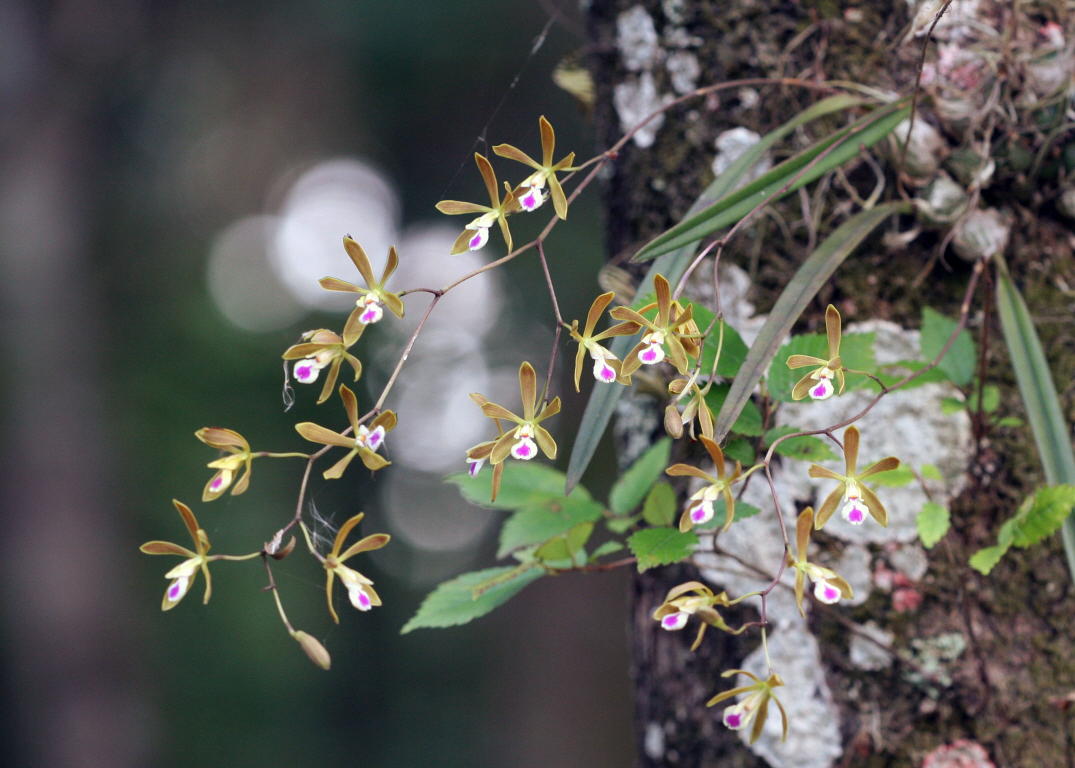Butterfly orchid
Pictured above: Butterfly orchid (Encyclia tampensis) by Mary Keim. Click on terms for botanical definitions. View post as a PDF.
Butterfly orchid (Encyclia tampensis) is a slow-growing, epiphytic perennial occurring naturally in mesic hammocks, hardwood swamps and mangrove forests. It is most commonly found growing on live oaks, but also occurs on bald cypress, mangroves and pond apples. Its diminutive yet showy flowers appear in late spring and summer; their honey-like fragrance attracts a variety of bees, which are the plant’s primary pollinators.
The flower is comprised of five greenish-brown tepals that surround a white lip with a purple blotch. The plant’s linear– to lanceolate-shaped leaves are evergreen and can grow up to 12 inches long. The fruit is a capsule that is filled with many tiny seeds. Once the capsule opens, the seeds are wind-dispersed.
The genus, Encyclia, is from the Greek enkykleoma, meaning “to encircle.” The species epiphet, tampensis, refers to the city of Tampa, where Encyclia tampensis was first discovered. The common name comes from flower’s resemblance to a butterfly.
Family: Orchidaceae (Orchid family)
Native range: Central and southern peninsula into the Keys
To see where natural populations of Butterfly orchid have been vouchered, visit florida.plantatlas.usf.edu.
Hardiness: Zones 8A–11
Soil: None; this plant is epiphytic and grows on tree trunks and branches in conditions with high humidity and low nutrients.
Exposure: Full sun to light shade
Propagation: Seed, division
Note: Although butterfly orchids are grown by enthusiasts, they are considered commercially exploited in Florida and may not be harvested or sold without a permit.

